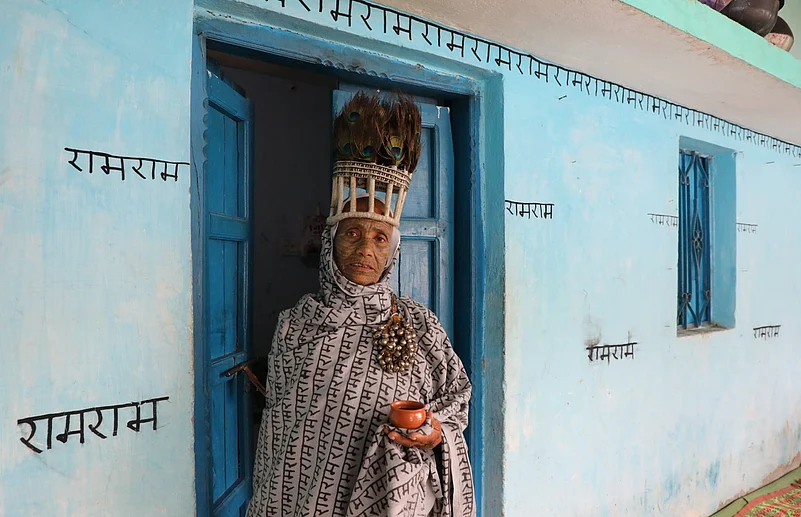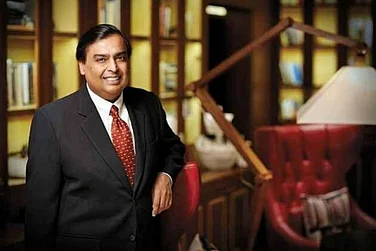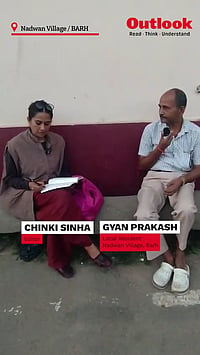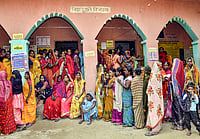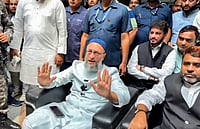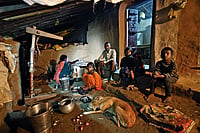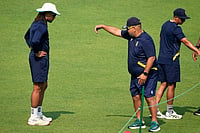Kariya Munda is one of the most distinguished tribal faces of the Bharatiya Janata Party: he has been a member of the Lok Sabha eight times, a Union Minister several times, and served as the Deputy Speaker of the 15th Lok Sabha. When he was denied a ticket for the 2019 general elections, it appeared – going by the way he expressed his displeasure – that the party had limited his activity in national politics given his advancing age.
However, the aggression that was evident in his address against religious conversions in the delisting rally on Dec. 24, 2023, organised by the Janjati Suraksha Manch at the Morabadi Maidan in Ranchi, would indicate otherwise, as though he has been reactivated and assigned a new role of honing the divisive strategy to be deployed among the tribals. Munda has been demanding the abolition of the Scheduled Tribe status of Christian and Muslim tribals and has been describing tribals as “Sanatan”.
Munda is the biggest of the four prominent tribal faces from Jharkhand who were invited to the Pran Pratishtha programme to be held on January 22 in Ayodhya. When Outlook asked him about Adivasis’ relationship with Lord Ram, he responded with questions of his own: “Where was Ram during his 14-year exile? Where did he live? Who lived with him? Who fought with him in the battle of Lanka, the Hindus and the Muslims? Who stood with Ram in every crisis?”
According to Munda, Ram lived with the tribals in the forests during the 14 years of his exile. In the battle of Lanka, he was supported not by Hindus or Muslims, but by the tribals. To those who insist that the tribals have no relation with Ram, Munda says if people can become each other’s in the course of a single night, how can we dismiss a friendship of 14 years?
In the course of the 15-minute conversation with this correspondent, Kariya was seen assiduously avoiding using the term “Hindu” to explain the relation between the Munda tribals and Ram. When asked: “Tell me in a simple and straightforward manner, do you identify as a tribal or a Hindu?” Munda responds that he identifies “As a worshipper of nature. The Sanatanis worship nature too, but the most ancient nature worshippers in the world are the tribals. Why are people ashamed to say ‘Sanatan’? As to ‘Hindu’, it is not even a religious identity, it is cultural.”
But Manoj Leyangi, who belongs to Jharkhand’s Ho tribe, proudly calls himself a Hindu and goes so far as to claim that the tribals are the only ‘pure’ Hindus. Speaking to Outlook, he says, “The bow and the arrow are associated with the tribals, you see. When Ram went into exile, he carried a bow and an arrow to protect society and himself. Nobody teaches the tribals how to use a bow and an arrow; it is inherent in their culture. This shows the close relationship we have with Ram from the time of our ancestors. Those who say that the tribals have a separate religion are all Christians and converts.”
When this correspondent tries to interject by saying that there is also a large section of non-Christian tribals who are demanding a separate religious code, Leyangi repeats loudly: “Who is the tribal here, you or I? And I am asserting this, am I not?”
Leyangi is also among the prominent names from Jharkhand who were invited to attend the inauguration of the Ram temple in Ayodhya. Several places in Jharkhand are said to be associated with Ram, Sita, and Hanuman. Ram is said to have visited Ramrekha in the Simdega district during his exile.
Professor Ranjit Kumar Mahali, who teaches political science at the Nilamber-Pitamber University, Medininagar, Palamu, considers Ram's relationship with Jharkhand to be a fictional story. Regarding Ramrekha Dham, he tells Outlook, “Simdega is a tribal-dominated district. What is called Ramrekha Dham was once a tribal village called Kaira Beda, but people have long forgotten that name. Similarly, in my home district of Lohardaga, a big fair is organised every January 15 near the Koel River, with the tale that Sita had lived in a cave here. Well, if Sita came here, she would not have come alone. If she came with Ram, Lakshman, or Ravana, then they too should have had caves. Where are those caves?”
Similarly, Mahali insists that the Anjani Dham in Gumla's Anjan Dham used to be a place of worship for the tribals, but was later developed as the birthplace of Hanuman. Tribal writer Gladson Dungdung has a question for the tribals who call themselves Hindus or descendants of Ram: Who came to India first, the tribals or the Aryans?
Dungdung tells Outlook, “Research based on linguistic and archaeological evidence shows that the tribals were the first to come into this country. Recently, American scientist David Reich's team of 92 scientists conducted DNA tests across the world and revealed that there have been four great migrations of humans and all of them have been out of Africa. The wave that started 70 thousand years ago reached India about 65 thousand years ago. People arrived in subsequent waves too. The Aryans arrived in India four thousand years ago. It can be easily figured out who is telling the truth and who is not.”
Dungdung also questions the claim that the tribals are mentioned in the Ramayana, “There is no mention of the term ‘tribal’ in the Ramayana. Rather, it says that Ram was accompanied by a vanar sena, i.e., bears and monkeys. Were the tribals bears and monkeys? If not, why were they not described as tribals?” he asks.
The Rashtriya Swayamsevak Sangh and the tribal people associated with the Sangh’s tribal organisations consider the tribals Hindus and describe their relationship with Ram with reference to the Ramayana and the Mahabharata.
Satyendra Singh Kharwar, the National Vice-President of the RSS-affiliated Vanvasi Kalyan Ashram, claims that the chiefs of almost all tribes from across the country, numbering close to a thousand, participated in the Pran Pratishtha programme in Ayodhya. Kharwar believes that the event is a joyous occasion not only for the tribes but for every religion and community of the country because Ram belongs to everyone.
Kharwar too believes that the tribals are mentioned in the Hindu religious texts. Quoting the Ramcharitmanas, he tells Outlook, “The tribal society has had a close relationship with Lord Ram since the time of his exile. The story of Ramayana is the story of the victory of the tribes. Ram is incomplete without the forest dwellers and the forest dwellers are incomplete without Ram. We must not forget that the same nature which the tribals worship as trees, sun, moon, earth, and stones, is also worshipped by the Sanatani Hindus, and it is nothing but a Sanatan tradition. Our dance and customs are all part of the Sanatani tradition.”
Writer and tribal issues expert Ashwini Kumar Pankaj is not surprised by Adivasis calling themselves Hindus. He says it is the result of a hundred years of right-wing activism that today the tribals are proudly calling themselves Hindus.
Pankaj tells Outlook, “Since 1920, the right-wing has been working among the tribals of the country. In fact, both the left and the right have worked less among their people and more among those with whom they share little in common. One went in the name of Ram, the other Marxism. And as to the mention of the tribals in the Hindu religious texts, there is no clear evidence of this anywhere. This is a tale fabricated after 1900 AD.”
Professor Mahali raises questions on the Shabari story in the Ramayana. “People often allude to the story of Ram eating the pre-nibbled bers offered by Shabari. Does that imply that there was no untouchability in Ram's time? If that is true then how did the tribals become marginalised? Why is there no mention of even a single tribal becoming a commander or minister or major official during Ram's era? If there was no untouchability in the Ramayana era, Hindu organisations should tell us in what period it came into being and became the phenomenon that Ambedkar had to fight with all his might," he says.
Translated by Kaushika Draavid







